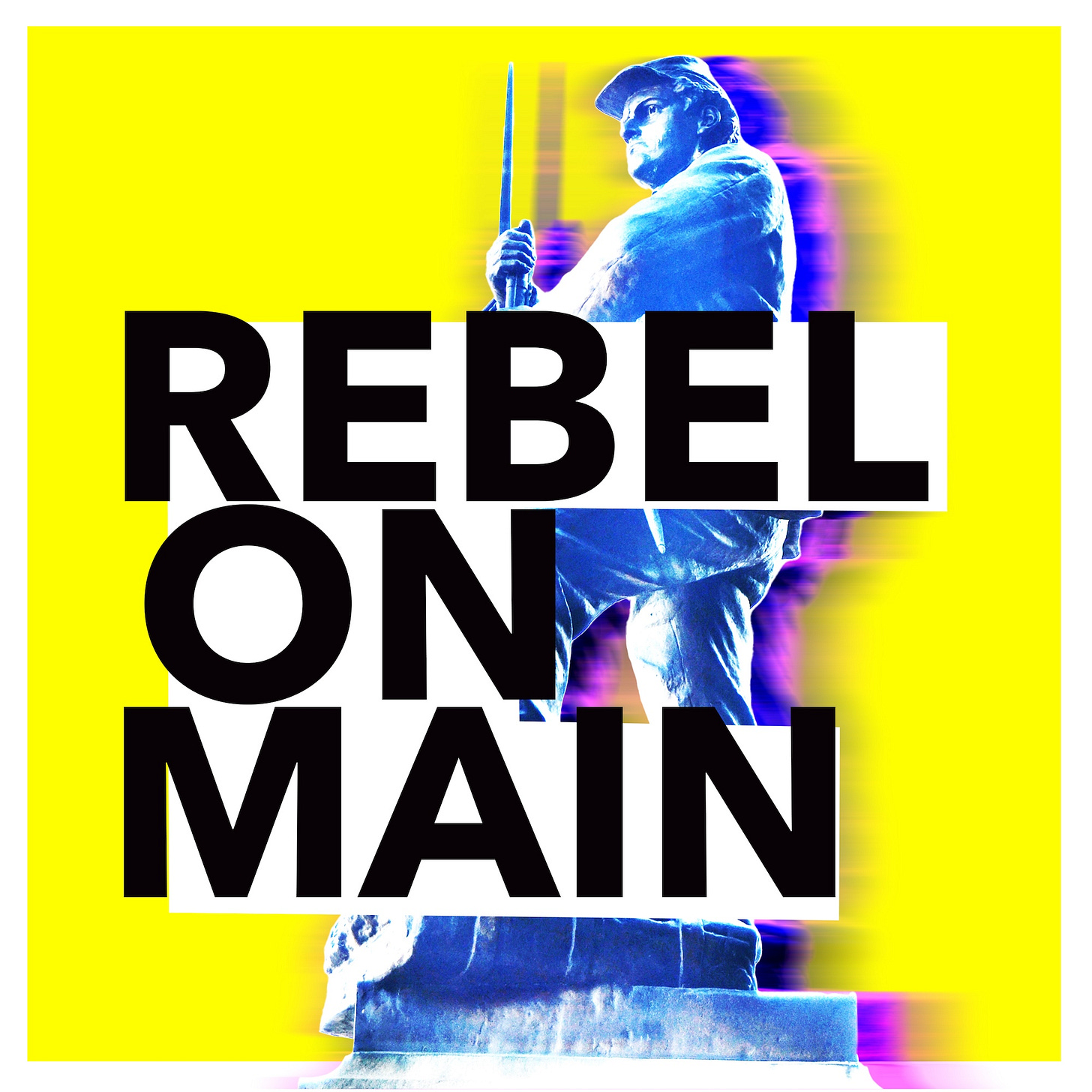Lessons from Pantsuit Politics' Premium Feed Success
How to grow your podcast revenue with subscriptions
Hello Besties!
This year has gotten off to a busy start. In addition to my usual podcast slate, I'm currently reporting a narrative nonfiction project that I can't wait to share more about in the coming months.
I'm also in the process of creating a home studio in a large walk-in closet. I ordered a small desk, a large rug, some noise dampening panels for the wall, soundproof curtains, and a new mic. I’ll share a photo as soon as I get everything set up.
Another thing I’m working on is potentially adding a premium feed for my biggest podcast, Private Parts Unknown, and I’ve been doing a bunch of research to inform my decision (and hopefully yours too!). So if you’re also thinking about adding a premium feed to your podcast and wondering if it’s right for your show, or looking for tips to grow your existing one, I’ve got a treat for you.
Today, we’re diving into the world of podcast subscriptions with the team from
. These seasoned podcasters have been balancing free and premium content since 2017. With years of experience behind the paywall, they’ve experimented with different hosts, fine-tuned their bonus content, and learned what makes a premium subscription worth it for themselves and their listeners. This Q&A has helpful insights for indie podcasters like us.I’m thrilled to share the Pantsuit Politics Q&A with y’all, but first, a quick word from our presenting sponsor… Rebel on Main, a new podcast investigation about a rebel statue in Kentucky’s Bluegrass region.
Why does he wear a rebel buckle and a Union hat? Over seven sound-rich episodes, Rebel on Main chronicles a Confederate statue’s bizarre birth, the protests that threaten to topple him, and the haunting story of a community that now decides his fate.
Psst… Do you want to advertise on Podcast Bestie? Here’s info about options and rates.
Tell me about your experience as a podcaster offering a premium subscription.
Pantsuit Politics has offered a twice-weekly free show since 2015. Starting in 2017, we have also offered paid premium episodes—first on Patreon, then Apple Podcasts Subscriptions, now exclusively on Substack.
What goes behind the paywall? What perks have you found to be most compelling for your subscribers? Has that changed over time?
We have two premium shows, Good Morning and More to Say, which each have three weekly episodes. Our premium offerings have evolved over time, meeting the needs of our audience in whatever season they and we are in. Over the years, we have had included a variety of opportunities for premium members, including live AUA nights, book club chats, and special events.
How did you land on a price point that works? Do you offer a free trial—why or why not? Monthly vs. annual pricing: What's the strategy?
When we were on Patreon, we had quite a few different tiers of pricing and struggled with differentiating our offerings at each one. Streamlining to the main tier and founding tier (we call them Executive Producers) on Substack has been really helpful for us. We offer both monthly and annual pricing with a free trial. We have a high retention rate of premium subscribers, so the free trial is helpful for us to get people in the door and get them experiencing our premium shows.
How much extra time and effort goes into creating content behind a paywall, and how polished do you make it?
A huge portion of our creation time each week goes into our premium shows. Some of it is looser and less polished than the main show, but not by a lot. We try to bring the same level of execution in our work across the board.
Any advice on adding value without the extra workload?
One of our biggest learnings has been that making more quantity doesn’t mean making more quality. Often, reducing the amount of content we are making enables us to make stronger shows. Being willing to constantly assess and reconsider the work we are doing is a valuable quality for our team.
Who hosts your premium feed? Have they offered you extra support or promotion?
Our premium feed is available exclusively through Substack. We made the move to join them in 2024. They were very helpful in that transition and continue to be helpful as we think about promotion, growing our audience, and any behind-the-scenes tech questions.
Any tips for marketing the subscription offering to listeners?
A big appeal of the premium subscription for our audience is the walled-garden community element that comes with it. As people move away from more traditional social media, it’s been a real gift to us and our audience to have a gated space where commenters are operating within a shared framework and with a mutual desire to learn and grow together.
Has it been worth it?
Without listener support, we wouldn’t be able to operate. It is the main sustaining element of our work.
At what point do you think a premium feed makes sense for indie shows with smaller audiences?
I think the most important thing to consider when contemplating a premium feed is what you want out of it. Is it purely for revenue? To create an audience community? To create a different type of content than you offer for free? The why behind the feed is the most important element because it will help you determine what makes a premium feed and the work behind it worth it to you.
Thanks so much, , , and managing director , who generously completed this Q&A!
➡️ Make sure you listen to the Pantsuit Politics podcast, and subscribe to
on Substack (and consider upgrading to paid!).Spotify launches revenue-sharing Partner Program: How much will it pay - and could it mean the end of open RSS?
How much does a famous podcaster get paid?: We learn the details of a Barstool Sports show
Pod Bible looks for a new owner: The magazine was monthly inside some issues of The Sunday Times
Listener retention to be important in 2025: Attention to retention should be your intention
The gender bias of video podcasts: Will a shift to video make things harder for women?
These quick hits are courtesy of Podnews editor
, who happened to be the first ever guest on Podcast Bestie, the Podcast. Listen to his episode!: How to Write a Novel with Author Matt Bell & His Craft Book "Refuse to Be Done"
is a writer's writer with an enviably productive novel-writing process—he actually wrote his craft book Refuse to Be Done: How to Write and Rewrite a Novel in Three Drafts between drafts of his novel Appleseed, and both books were the better for it. We get into that, his tips for NaNoWriMo, his favorite craft books, and more.: From Sex Cult Survivor to Holistic Porn Purveyor: Inka Winter’s Journey to Redefining Pornography with ForPlay Films
Inka Winter shares her approach to creating ethical, feminist, and holistic pornography and gives advice on how we can all become more ethical consumers of adult content. She also opens up about her experience growing up in a sex cult (the infamous Friedrichshof Commune) and how losing her sex drive after an abortion inspired her mission to create porn that is emotionally and spiritually fulfilling.
So… ROLL CALL! 🗣
Do you have a premium subscription for your podcast? If so, I would love to interview you.
Do you subscribe to any premium podcast feeds? I want to know what inspires you to become a paid subscriber.










